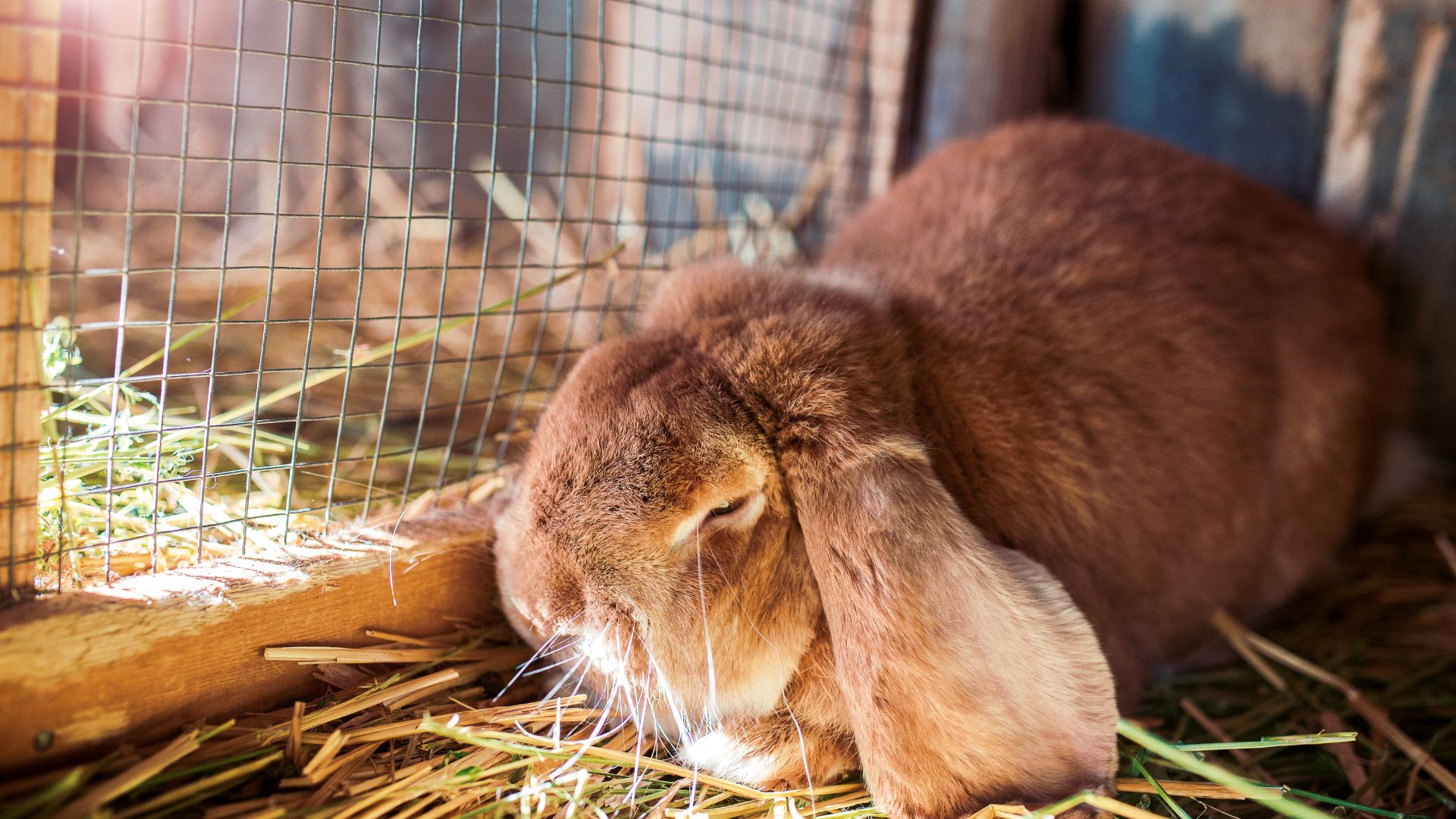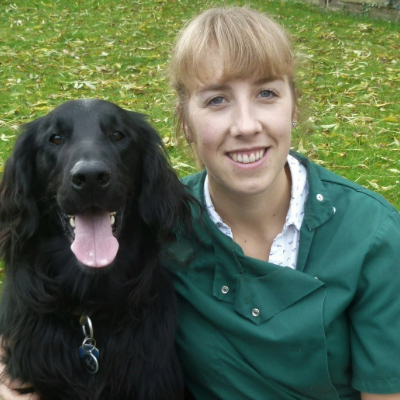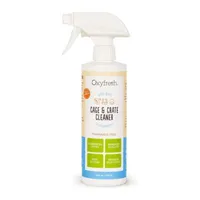How to clean a rabbit cage
Our experts share their top tips on how to clean a rabbit cage and how often you need to do it.

Want to learn how to clean a rabbit cage? We’ve got you covered. This might not be your favorite part of pet parenthood, but it certainly is important and will help to keep your bunny happy and healthy.
Whether your rabbit lives in one of the best indoor rabbit hutches or an outdoor enclosure, you need to ensure their environment is clean and hygienic. Bunnies produce over 300 fecal poops a day, so it’s crucial to keep on top of this chore and not let it get out of hand.
If you’ve recently brought home a bunny, you might be wondering how to clean out their cage and how frequently it needs to be done. That’s why we’ve asked expert vet Dr. Rebecca MacMillan and nurse Claire Speight for the answers:
What you need to clean a rabbit cage
Before you get started, you’ll need to stock up on the following materials:
- Trash bag
- Dustpan and brush or a scoop
- Pet-safe disinfectant spray
- Sponge or paper towel
- Scrubbing brush
- Warm soapy water
- Bucket
- Towel
- Vacuum cleaner
Oxyfresh Premium Crate & Cage Cleaner
This non-toxic cage cleaner gets rid of nasty odors and removes the build-up of dirt. The formula is pet-safe, scent-free, and doesn’t contain any harmful chemicals or dyes.
How often do you clean a rabbit cage?
Daily cleaning
Rabbits are naturally quite clean, but their cages will need a decent amount of maintenance. Rabbits only have one or two areas in their cage that they use as toilets, but understanding how to clean a rabbit cage properly in these areas is crucial.
An accumulation of urine and faces not only causes an odor, but can attract flies and cause potential health problems, so even the best rabbit litter boxes will need cleaning out on a daily basis. This involves removing all of the urine, feces and litter, cleaning the litter tray with warm water, drying it and replacing the soiled litter with clean. Diluted white vinegar can also be used, rinsed off and dried to clean the litter tray, as well. Some litter materials are easier to clean than others – here’s our guide to the best rabbit litters to help you choose.
If your rabbit uses a cage as part of their enclosure, they are likely to use this as a litter tray, so this will need cleaning in the same way as a litter tray. Always replenish your rabbits hay each day, even if it has not been eaten.
Get the best advice, tips and top tech for your beloved Pets
Rabbit urine is alkaline, and can contain more calcium than other species’ urine, so often leaves a white residue on plastic or metal. This can easily be cleaned away by using a sponge. If you do this every day, it will not have a chance to build up. Rabbit droppings make excellent fertilizer and can be recycled for this purpose.
Also make sure you change your rabbits’ water daily, and if you use a water bottle also check to make sure it is working properly.
Dr. MacMillan says: “Doing daily spot checks will also help you to keep an eye on your rabbit by allowing you to monitor their toileting and eating habits regularly. If you notice any changes then you should contact your vet for advice.”

Deep cleaning
You should be removing droppings, urine and dirty litter on a daily basis, but the rest of your rabbits’ enclosure might only need thoroughly cleaning once or twice per week. This does depend upon how tidy your rabbits are, however, so keep that in mind.
Each time you clean this area, you will need to replenish the bedding and hay. If your rabbits are house rabbits, then vacuum or sweep the environment. Outdoor rabbits will need the area sweeping too. For easier cleaning, opt for one of the best beddings for rabbits.
Tidy the environment, check for any damage or wear and tear, and check over the toys and items in their enclosure to ensure they have not been chewed or damaged. Remove anything that you are concerned about.
Dr. MacMillan says: "If your rabbit has any fabric bedding, then this should be washed. Clean down the entire cage with a pet-safe disinfectant. You should also wash any toys and accessories with warm soapy water, rinsing and drying them well before putting them back."
Absolutely Clean Small Animal Cage Cleaner & Deodorizer
This cage cleaner uses natural enzymes to break down stains and odors. You won’t find any harsh chemicals in the formula and it can be used on a range of surfaces including metal, wood, glass, and plastic.
Where to put your rabbit when cleaning their cage
This depends on the size of your rabbits’ enclosure. It is best to safely segregate them in one area of the enclosure while you clean out that area and then swap them into the clean area, whilst you clean out the other area in the enclosure.
This is often less stressful to the rabbits, as they are not leaving their usual enclosure. If this is not possible, then encourage them into their carrier with their favorite treats, so they can be contained in here whilst you clean their area, before placing the carrier back into the clean enclosure and letting them come out in their own time.
Most rabbits do not like being picked up, and find it stressful, so if you can train them to happily enter their carrier, this reduces the need to handle them for this purpose. Leaving the carrier in their enclosure, with food inside, will encourage them to explore it and to become accustomed to it.

Never underestimate the importance of keeping your rabbits’ environment clean – it is imperative that you learn how to clean a rabbit cage properly. Living in a damp, dirty and smelly environment has health and welfare implications, and is simply not nice for the rabbits.
Make sure you set aside adequate time each day for spot cleaning and once or twice weekly for deep cleaning, and ensure you keep sufficient amounts of clean litter, hay and bedding materials.
For more advice like this, read our guides on rabbit grooming and rabbit care.

Rebecca is a veterinary surgeon who graduated in 2009 from the Royal Veterinary College in London. She has a wealth of experience in first opinion small animal practice, having done a mixture of day-to-day routine work, on-call emergency duties and managerial roles over the years. She enjoys medicine in particular and she is proud to have recently achieved a BSAVA postgraduate certificate in small animal medicine (with commendation).
Claire currently works in Kettering as a Head Nurse in a practice with a high rabbit caseload, as well as frequently lecturing and writing on rabbits to both veterinary professionals and owners.
- Megan MilsteadStaff Writer



